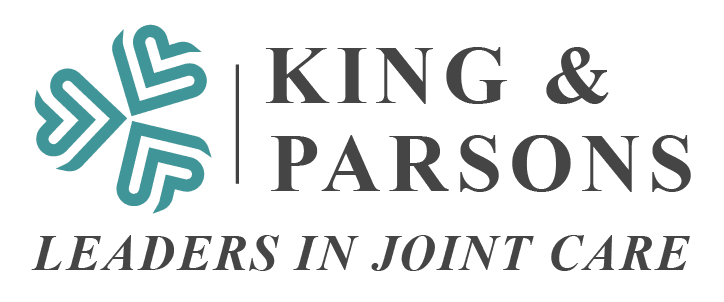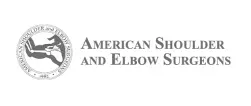Background and Rationale
Dr. Matsen
Ream and Run Shoulder Resurfacing Replacement was pioneered by Dr. Frederick Matsen at the University of Washington in the late 1990s and early 2000s in response to the recognition that many younger and active people are developing degenerative arthritis of the shoulder and do not wish to modify their lifestyle with permanent activity restrictions. Full shoulder replacements, while highly successful in terms of pain relief, do not have the same durability as hip and knee replacements and longitudinal studies have shown a higher incidence of wear, loosening and fracture of the socket (glenoid) component between 5-15 years. For people who may be in their 40s, 50s and 60s, this lifespan is unlikely to last active patients the rest of their lives. Furthermore, glenoid prosthesis loosening can cause damage to the bone that can make revision surgery complicated with uncertain results.
Glenoid component showing
eccentric surface wear
Partial shoulder replacements avoid inserting a glenoid component but results have been less promising in younger patients and those with higher activity levels. This is often because the socket bone may develop some erosion from the arthritis process wearing out the back part of the joint. If this wear is not addressed at the time of surgery to correct the shape and orientation of the glenoid, shoulders will continue to have wear and pain. The Ream and Run was developed to simultaneously address the issues of premature socket prosthesis failure and the reasons for unsatisfactory results after conventional partial shoulder replacement.
What is the Ream and Run
Resurfacing Ream and Run
The Ream and Run is a resurfacing replacement of the humeral head in combination with reaming of the glenoid to create a smooth and conforming surface with the head prosthesis. Reaming corrects any deformity of the socket and reorients the socket when it is eroded or worn on the back side. This allows the head to recenter itself in the socket for optimal load distribution across the joint. The conforming surfaces also ensures smooth rotation and with a stable joint.
The advantage of the Ream and Run is that no socket prosthesis is inserted. Given that problems like loosening and wear of the humeral prosthesis are incredibly rare, avoiding a glenoid prosthesis allows patients unrestricted activity as there is no risk for glenoid implant failure. This provides an excellent option for younger patients for whom glenoid failure is imminent given their age as well as very active patients who wish to resume high level activity that poses a risk for glenoid failure.
Who is a Candidate for the Ream and Run
X-ray showing posterior glenoid
erosion and head subluxation
As stated, the Ream and Run is generally intended for patients with moderate to severe glenohumeral arthritis who are in the 40s, 50s and 60s. At this age, it is highly unlikely that a glenoid implant will outlast the predicted life expectancy of the patient. The decision however must be balanced with ensuring that the goals of a ream and run can be met. Namely, reaming must be able to correct any deformity and erosion to create a smooth concavity that is properly oriented with respect to the body of the shoulder blade. If achieving these goals removes excessive glenoid bone, then patients are likely to have continued pain.
In order to properly determine who is an acceptable candidate, a CT scan is often necessary to accurately assess the preoperative status of the glenoid. The CT provides an accurate three-dimensional picture allowing the surgeon to measure the degree of posterior glenoid erosion as well as how much bone needs to be removed in order to reorient the glenoid through corrective reaming.
There are situations where the degree of erosion is advanced enough that reaming the glenoid will remove too much bone. This has several negative consequences. One is removing the hard plate of bone on which the cartilage sits and exposing the softer spongy bone underneath which is not robust enough to support the prosthetic humeral head. Second, corrective reaming can narrow the glenoid removing important surface area over which force is transmitted. Third, reaming can move the joint line inward resulting in improper tension in the rotator cuff.
In situations where the preoperative assessment indicates that a Ream and Run is unlikely to be successful, full shoulder replacement is necessary to achieve the goals of pain relief and restoration of function. Fortunately, there are newer glenoid prosthesis design options with titanium pegs that permit bone ingrowth and the hope of improved long-term durability.
What is the Recovery of the Ream and Run?
The Ream and Run uses a conventional approach similar to a full shoulder replacement. This is necessary in order to adequately exposure the shoulder socket for the reaming process. This approach requires that the subscapularis tendon is surgically detached. At the end of the reconstruction, this tendon is securely reattached to its native insertion. The majority of the early recovery process is aimed at protecting this repair while it heals.
This involves gentle progressive range of motion exercises without any major resistance for the first 6-8 weeks. Patients are allowed to remove the sling around 2-3 weeks as long as they are cognizant of not overusing the shoulder. The goal during this time is to restore range of motion that is regained at the time of surgery by releasing contracted tissue in the shoulder. The more range of motion patients achieve, the better the shoulder will feel. Persistent loss of rotation can be a source of ongoing pain.
Around the 6 week mark, patients will begin light rotator cuff strengthening exercises aimed at the gradual process of restoring shoulder function. As, further time passes, the degree of resistance will increase and patients will be allowed to return to every day activities provided they are not overly strenuous.
Full healing of the subscapularis tendon takes approximately 3 months and at this point patients can begin more normal use of the arm including more strenuous exercise. At this point, the goal is to fully strengthen the rotator cuff, deltoid and other muscles that surround the and support the shoulder joint. Continued stretching efforts are important to ensure that maximal range of motion is achieved.
Expectation for Recovery
Arthritic shoulders develop quite a bit of stiffness and weakness during the degenerative process. Full recovery of the strength and motion takes time and persistence. Formal physical therapy may end 8-12 weeks after surgery but it can take 6-12 months to maximize shoulder function. During this period when persistent cuff weakness and stiffness remain, shoulders can continue to be sore. This lingering soreness can be disconcerting to patients if they are expecting rapid return of function and pain relief.
Another source of persistent pain after Ream and Run is the healing that must occur of the reamed glenoid bone. Reaming in essence creates a fracture healing response of the bone surface. As the metal ball rotates over the surface, it will undergo a molding process as it heals. The bone will effectively shape itself around curvature of the head to maximize the area of contact. This healing and molding process can take months to complete itself through a remodeling process.
All told, patients who wish to undergo a Ream and Run operation need to anticipate and accept that it may take up to 12-18 months for the shoulder to reach its maximal potential. That said, most patients are progressively improving throughout this process with increasing activity level as the strength and motion sequentially return. Key to full recovery and maximum benefit of this operation is that patients actively engage in the long-term rehabilitation as continued home exercises are critical for 6-12 months beyond the time of formal physical therapy.
Long-Term Outcomes
12 year old Ream and Run seen
from lateral view showing centered
head with excellent glenoid
conformity and no medial wear
A properly done Ream and Run can have outcomes comparable to a total shoulder replacement provided that: 1) the surgeon achieves the goals of surgery, and 2) patients adequately rehabilitate the shoulder after surgery. We now have patients that are 13 years after a Ream and Run who have never required revision to a full shoulder replacement and continue to have a high level of comfort and function with no postoperative restrictions and no radiographic progression of glenoid wear.
As with any operation in orthopaedics, there is not a 100% record of success and some patients despite what appears to be a properly done surgery and a well-executed recovery can have persistent pain. It is thought in general that this pain stems from the unresurfaced glenoid and in rare cases, revision to a full shoulder replacement may be necessary to address ongoing pain.
Complications
Complications after Ream and Run can be divided into short-term and long-term issues.
- Short-term:
- Infection: this occurs in less than 1% of cases of Ream and Run but can be a devastating problem. Infection can either manifest as persistent pain or with fulminant signs including drainage, fever, redness, heat and swelling. Infection may require further surgery to eradicate the bacteria.
- Rupture of the Subscapularis Repair: this typically occurs in the first 3 months postoperative from: 1) overly aggressive physical therapy; 2) an accidental trauma or 3) noncompliance with the restrictions. This can be detected on exam by internal rotation weakness. This requires a revision repair or else the shoulder will not function properly.
- Stiffness: obtaining adequate range of motion is a race between the propensity for shoulder to get stiff and the desire to not injure the reconstructed shoulder. Stiffness can be a source of ongoing pain and generally with persistent efforts can be overcome in time.
- Long-term
- The major long-term complication is progressive glenoid erosion or ongoing pain that requires revision to a full shoulder replacement. The likelihood of this cannot be predicated in any given case. Serial examinations and xrays can sometimes indicate progressive wear on the native glenoid.
To learn more about having a shoulder resurfacing replacement, here.



















